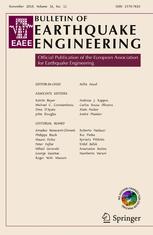学术论文详情
Research on the influencing factors for residual displacements of RC bridge columns subjected to earthquake loading
摘要:Following the 1995 Kobe earthquake, many RC bridge columns were demolished due to a residual drift ratio of more than 1.75 % even though they did not collapse. The residual drift ratio is a quantitative index for the performance objective of reparability in the bridge seismic design. Numerical models of the columns are built to study the factors that influence the residual displacement of RC bridge columns. In these models, both column bending and bar pulling out deformation are considered using the fiber column-beam element and zero-length section element, respectively. Then, nonlinear time history analyses are performed. The factors that influence column residual displacement, such as the characteristics of ground motion, the structural responses (the maximum lateral drift ratio and the displacement ductility factor), and the structural characteristics (the aspect ratio and the longitudinal reinforcement ratio) are investigated. It is found that the near-fault ground motion induces a larger residual drift ratio than the far-fault ground motion. The residual drift ratio becomes larger due to the increase of the maximum lateral drift ratio, the displacement ductility factor, and the aspect ratio. Further, a larger longitudinal reinforcement ratio can induce a larger residual drift ratio due to the contribution of the bar pulling out deformation.
©2026 王东升-桥梁抗震与减震控制研究团队 京ICP备18023726号-1
技术支持: Geecho
